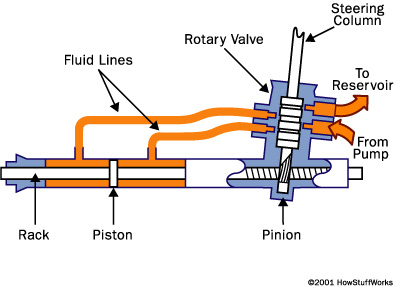I do not know your skill level so I can't answer if you can perform the repairs. However, I will list the replacement procedures and let you be the judge of that.
REMOVAL:
Remove and isolate the negative battery cable.
Raise and safely support the vehicle. Place a drain pan under the power steering pump.
Disconnect the wiring harness connector to the oxygen sensor which is accessible through the oxygen sensor wiring harness grommet in the vehicle floor pan.
Remove the catalytic converter from the exhaust manifold and remove all exhaust system hangers and isolators from the exhaust system brackets. Move exhaust system out of the way as far rearward and to the left as possible to provide access to the power steering pump.
Remove the power steering fluid return line hose on the front suspension cradle. Allow the fluid to drain from the pump and hose.
Remove the accessory drive belt splash shield.
Remove accessory drive belt.
Disconnect the power steering remote reservoir supply hose from the fitting on the power steering pump. Allow fluid to drain from the hose.
Remove power steering fluid pressure line from the power steering pump and drain any excess power steering fluid.
Remove the power steering fluid return hose from the power steering pump.
Remove the rear support bracket mounted behind the power steering pump to the engine block.
Remove the 3 mounting bolts that secure the pump to the alternator/power steering pump and belt tensioner mounting bracket.
Remove the power steering pump and pulley assembly from the vehicle. Transfer all required parts from the pump to the new replacement pump before installation.
INSTALLATION:
Position the front of the power steering pump up onto the mounting bracket. Torque the 3 power steering pump-to-mounting bracket bolts to 40 ft. Lbs. (54 Nm).
Install the rear power steering pump-to-engine block support bracket. Torque the support bracket mounting bolts to 40 ft. Lbs. (54 Nm). Install the nut to the mounting stud behind the pump and torque to 40 ft. Lbs. (54 Nm).
Install the high pressure fluid line to the pump output fitting. Torque the high pressure line-to-power steering pump fitting to 275 inch lbs. (31 Nm). Be sure to inspect the pressure line O-ring for any damage before connecting the pressure line to the steering pump.
Install the low pressure power steering fluid hose to the power steering pump low pressure fitting. Be sure the hose clamps are properly reinstalled and hoses are clear of the accessory drive belts.
Install the accessory drive belt.
Install the hose on the power steering fluid return line on the front suspension cradle. Be sure the hose clamps and heat shield tubes are correctly reinstalled.
Reconnect the exhaust pipe to the exhaust manifold. Install the hangers and isolators onto the exhaust system brackets. Torque the nuts and bolts to 250 inch lbs. (28 Nm).
Reconnect the wiring harness connectors to the oxygen sensor. Install the wiring harness grommet into the vehicle floor pan.
Install the accessory drive belt splash shield.
Remove the drain pan and lower the vehicle.
Refill the power steering pump reservoir with the correct amount of clean power steering fluid.
Reconnect the negative battery cable. Bleed the power steering system.
Run the engine and check the system for leaks and proper steering operation.
Thanks for using 2CarPros. Com!
Monday, July 27th, 2020 AT 9:24 AM
(Merged)


